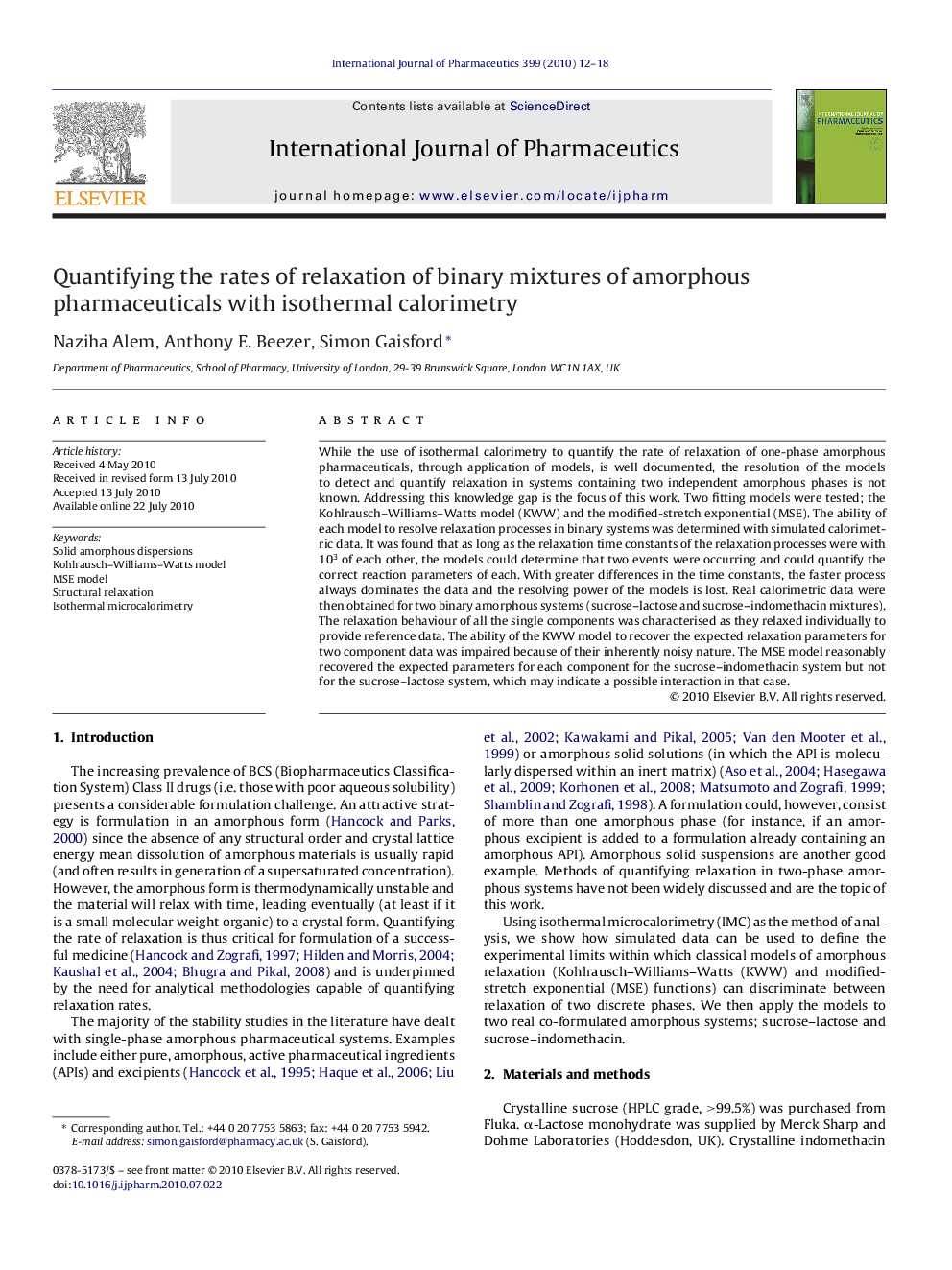| Article ID | Journal | Published Year | Pages | File Type |
|---|---|---|---|---|
| 2503890 | International Journal of Pharmaceutics | 2010 | 7 Pages |
While the use of isothermal calorimetry to quantify the rate of relaxation of one-phase amorphous pharmaceuticals, through application of models, is well documented, the resolution of the models to detect and quantify relaxation in systems containing two independent amorphous phases is not known. Addressing this knowledge gap is the focus of this work. Two fitting models were tested; the Kohlrausch–Williams–Watts model (KWW) and the modified-stretch exponential (MSE). The ability of each model to resolve relaxation processes in binary systems was determined with simulated calorimetric data. It was found that as long as the relaxation time constants of the relaxation processes were with 103 of each other, the models could determine that two events were occurring and could quantify the correct reaction parameters of each. With greater differences in the time constants, the faster process always dominates the data and the resolving power of the models is lost. Real calorimetric data were then obtained for two binary amorphous systems (sucrose–lactose and sucrose–indomethacin mixtures). The relaxation behaviour of all the single components was characterised as they relaxed individually to provide reference data. The ability of the KWW model to recover the expected relaxation parameters for two component data was impaired because of their inherently noisy nature. The MSE model reasonably recovered the expected parameters for each component for the sucrose–indomethacin system but not for the sucrose–lactose system, which may indicate a possible interaction in that case.
